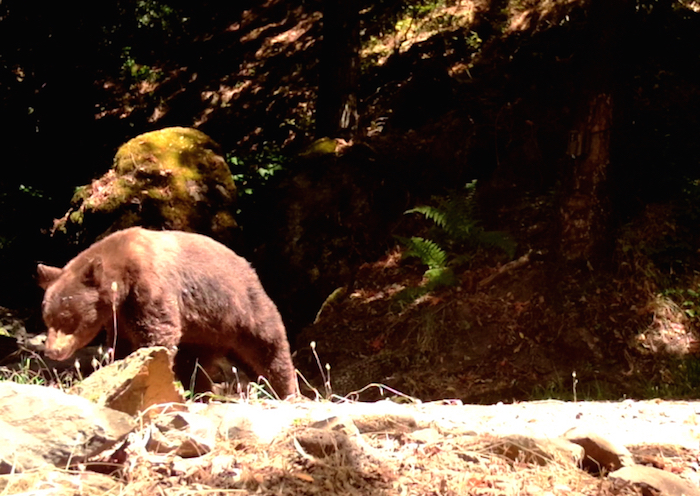The mighty grizzly bear that adorns our state flag has been missing from California for nearly a century. But lately there is good news from bear country: in some places, including Sugarloaf Ridge State Park and other Sonoma Valley open spaces, black bears are slowly but surely moving into old (and new) ranges.
While a boon for nature, the bears’ movement means we, locally, should educate ourselves and make any needed adjustments to their presence. That’s why Sonoma Ecology Center, in collaboration with several partners and led by wildlife tracker and ecologist Meghan Walla-Murphy, has launched the North Bay Bear Collaborative, which will study these animals and provide data-driven advice for ways to make their lives, and ours, more harmonious in Sonoma Valley.
This is the logical place for such a study. The highest density of black bears in the contiguous United States is in Mendocino and Humboldt counties, putting Sonoma County at the southern edge of their slow migration. As seen on our wildlife cameras, black bears have recently moved back into Sugarloaf and the Mayacamas on a full-time basis. And the Sonoma Valley Wildlife Corridor could be an inviting conduit for these magnificent animals.
The North Bay Bear Collaborative project seeks to answer questions about the bears’ status and behavior – where are they, where are they going, what areas do they use and need, what are their numbers and ages and sexes – as well as what we humans need to do culturally to coexist with them. This second aspect, which we call “Bear Aware,” is key to keeping bears and people safe, and the bears wild.
Walla-Murphy is principal investigator on the project, with Sonoma Ecology Center as organizational host. Our partners include Sonoma County Regional Parks, California State Parks, California Department of Fish and Wildlife, Audubon Canyon Ranch and Pepperwood Preserve. The North Bay Bear Collaborative is another example of our work in identifying ecological needs and trends and working proactively with the community to achieve and sustain ecological health in Sonoma Valley.
How can you join this worthy effort? By following our progress, and by providing monetary support if possible. Sonoma Ecology Center hopes to contribute $15,000 to the project this year, and currently we’ve raised $10,000. To support the North Bay Bear Collaborative, please go to sugarloafpark.org/support/.

